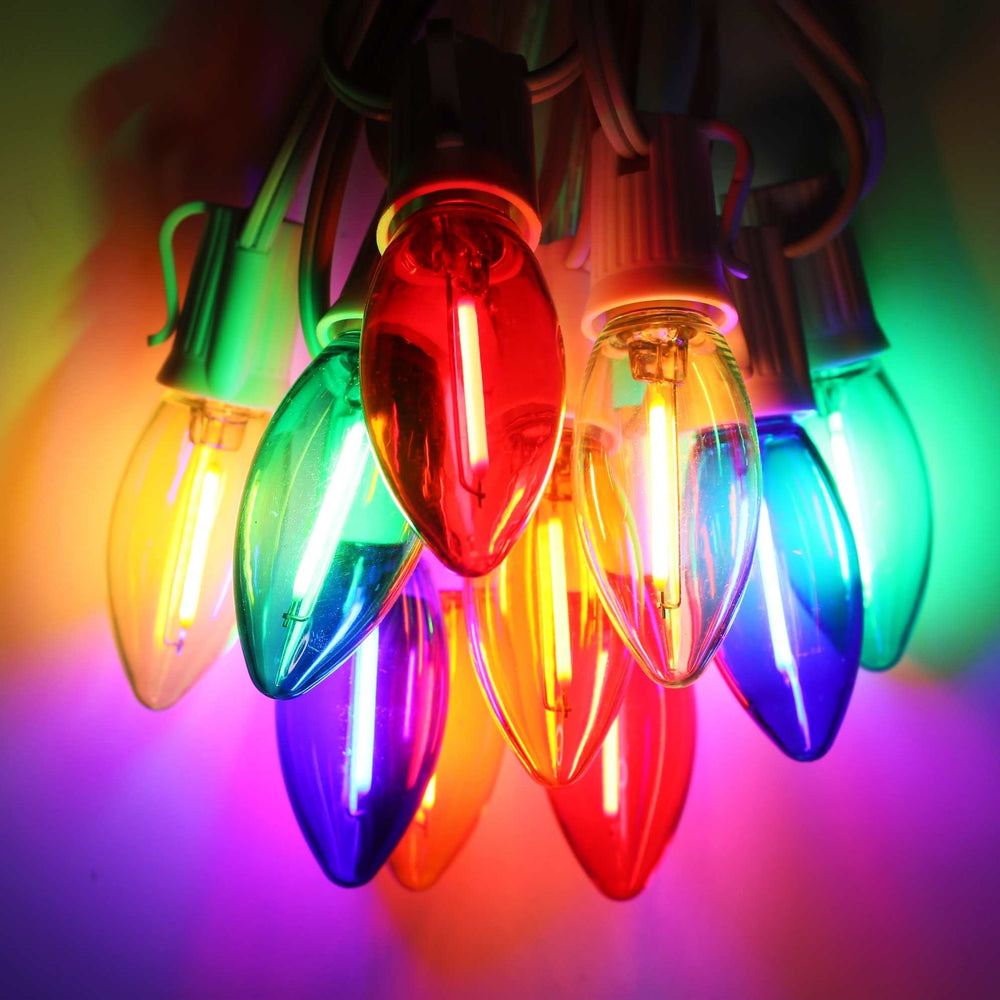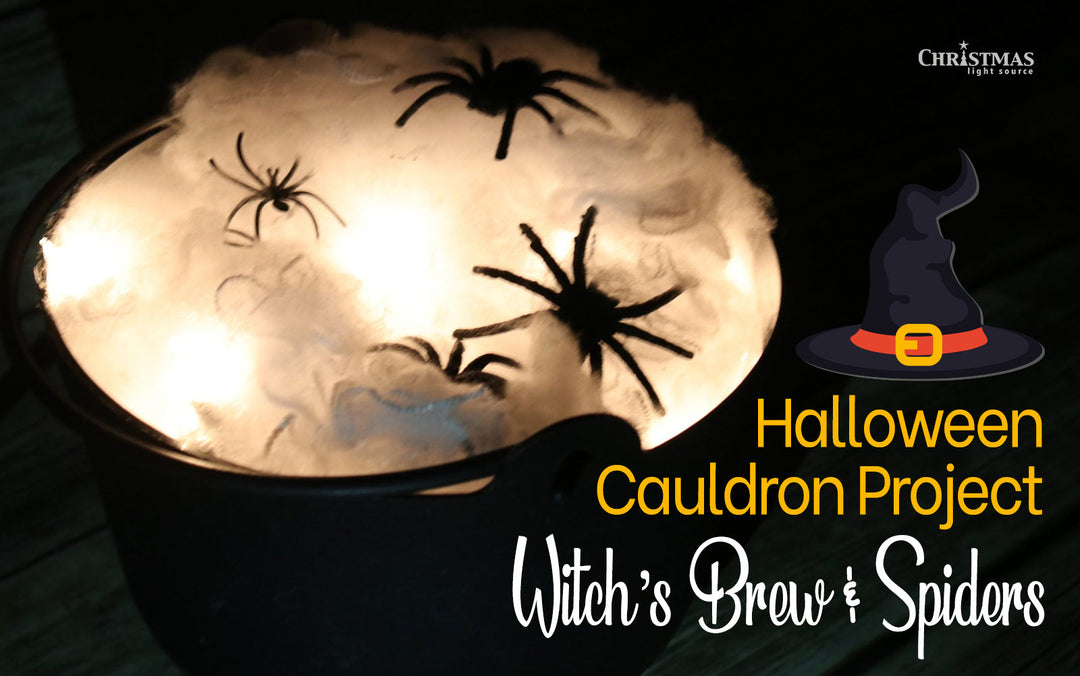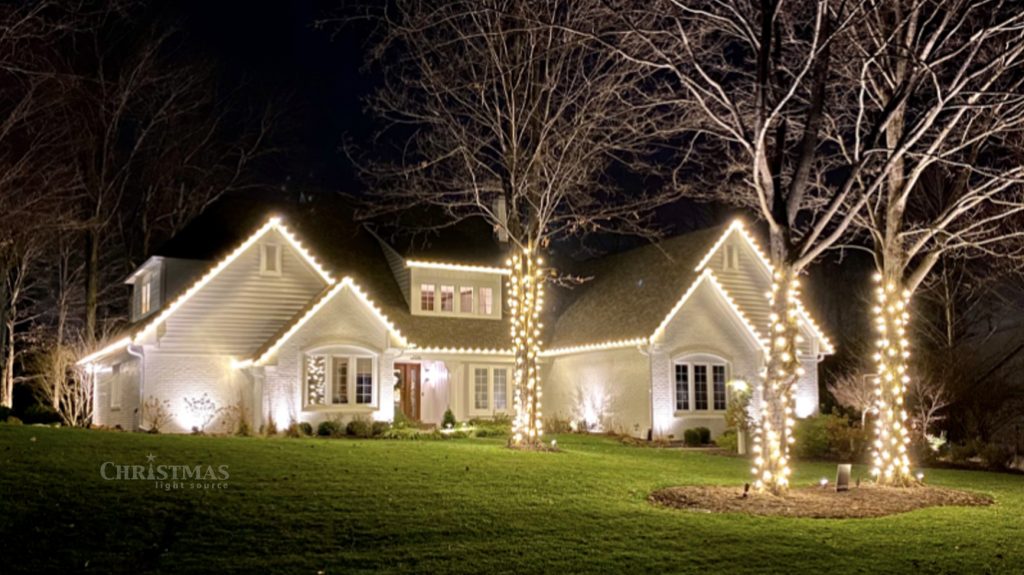Do LED Christmas bulbs get hot at all?
A practical, real-world explanation for decorators, homeowners, and Christmas-light nerds like us.
Every season — without fail — someone asks:
“Do LED bulbs get hot at all?”
It’s a great question, especially if you’re wrapping a fresh-cut tree, building a parade float, or attaching lights to something that really shouldn’t get warm (looking at you: foam, fabric, or plastic decor).
The short answer: yes, but just barely. LEDs do produce a small amount of heat, but it’s nothing like the warmth you’d feel from traditional glass incandescent bulbs.
Let’s walk through why that is and how it affects real-world decorating.
LEDs vs. Incandescent: Why the Heat Difference Matters
Incandescent glass bulbs create light by heating a tiny metal filament until it glows. That glow is light — but most of the energy coming out of the wall becomes heat.
LED bulbs create light electronically, not by burning a filament. No glowing wire means much less heat and much less energy wasted.
Visual: How Energy Is Used
Incandescent bulb
INCANDESCENT BULB
|███████ | Light ~10%
|████████████████████████████| Heat ~90%LED bulb
LED BULB
|████████████████████████████| Light ~80–90%
|███ | Heat ~10–20%Numbers vary by design, but the comparison holds: LEDs put most of their power into light instead of heat. That’s one of the reasons they’re such a good choice when you’re decorating anything that doesn’t appreciate getting warm.
- Fresh greenery
- Ribbon and bows
- Wreaths and garlands
- Foam, fabric, or plastic decor
- Close-range indoor installations
So Do LEDs Get Warm to the Touch?
A little — especially at the base of the bulb, where the internal components manage heat.
After several hours of operation, you may feel gentle warmth, but nothing like the “Ouch!” moment of touching a glass incandescent bulb. In most decorating situations, LEDs stay cool enough to handle and cool enough to tuck into decor safely.
Where the Warmth Actually Lives
A simple way to think about it:
- The lens or globe (the part you see) — stays relatively cool.
- The base or heat sink — where you may feel a bit of warmth.
Nothing dramatic, just enough temperature to show the bulb is alive and working.
When LEDs Might Feel Slightly Warmer
LED bulbs are still far cooler than glass incandescents, but you might notice more warmth in situations like:
- Hot summer patio or year-round installs
- Lights packed tightly into decor with very little airflow
- Older LED strings that don’t have improved heat-sink designs
Even then, LEDs run much cooler than classic glass bulbs doing the same job.
Choosing the Right Bulbs for Your Project
If you love the nostalgic glow of traditional glass, we still have you covered:
- Classic glass C7 bulbs: Glass C7 Bulbs
- Larger glass C9 bulbs for big, traditional displays: Glass C9 Bulbs
If you want all the sparkle with far less heat and power consumption, take a look at our LED options:
- LED C7 bulbs: LED C7 Bulbs
- LED C9 bulbs: LED C9 Bulbs
- Want to see everything in one place? Browse All Bulbs (Glass & LED)
Warm White vs. Pure White
One of the most common follow-up questions after heat is color: should I choose warm white or pure white LEDs?
We filmed a side-by-side comparison to help you decide: Warm vs. Pure White — What’s Your Favorite?
Coming Soon: How Many Lights Can I Run on One Plug?
If you’re planning a big installation, the next question is usually, “How many of these can I plug in together?” We’re working on a dedicated How Many Lights on One Plug? guide that will walk through:
- Power limits for LED vs. incandescent
- How to read max-run information on product pages
- Simple math to keep your circuits happy
Stay tuned for that article — it’s on our short list.
Final Takeaway
LED bulbs do get gently warm, but they don’t burn fingers, dry out trees, melt hot glue, or threaten ribbon, garland, or greenery the way traditional glass bulbs can.
That’s one of the biggest reasons decorators — from homeowners to cities — reach for LEDs every year:
- Bright light
- Low heat
- Lower power draw
- High sparkle
Whether you choose classic glass or modern LEDs, we’re here to help you find just-the-right bulbs for your project and answer all the “Do these get hot?” questions along the way.









